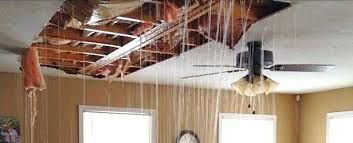Water Damage in Homes Explained: Key Facts, Knowledge, and Step-by-Step Solutions
Water damage in homes refers to structural, surface, and material deterioration caused by unwanted water intrusion. This type of damage can occur suddenly, such as from heavy rain or plumbing issues, or gradually due to hidden leaks and moisture buildup. It affects floors, walls, ceilings, electrical systems, and household items, making it both a safety and maintenance concern.
Homes experience water damage for several reasons. Weather patterns are becoming increasingly unpredictable, leading to intense rainfall and storms. Indoor factors also contribute, including aging pipes, poor waterproofing, inadequate drainage, and improper ventilation. Understanding how and why water damage happens helps residents reduce risk and respond quickly when problems arise.
Water damage is not only a structural issue. It can influence indoor air quality, create damp environments where mold grows, and negatively impact day-to-day living. Because many signs of water intrusion are subtle in the beginning, awareness is the first step toward prevention and long-term home maintenance.
Importance: Why Water Damage Matters Today
Water damage is more relevant today than ever. Many regions worldwide are experiencing stronger monsoon seasons, severe storms, and rapid urban development that reduces natural drainage areas. These changes make residential buildings more vulnerable to water infiltration.
This topic matters for:
-
Homeowners, who must protect the structural integrity and safety of their property.
-
Renters, who need safe, dry living spaces and must identify issues early.
-
Building managers, who maintain multi-unit housing and ensure habitability.
-
Families, who rely on healthy indoor environments free from dampness and mold.
Water damage affects daily life in several ways:
-
Weakens walls, roofs, foundations, and floors
-
Creates moisture-related problems such as mold and mildew
-
Damages electrical wiring
-
Increases long-term repair needs
-
Reduces indoor comfort and air quality
Early awareness and practical steps can help households prevent severe damage and maintain healthier living conditions.
Recent Updates: Trends and Developments (2024–2025)
Over the past year, several important developments have shaped how people manage water damage in homes.
Increase in climate-related incidents (2024):
Data from various weather agencies around the world showed a rise in short-burst, high-intensity rainfall. These events increased urban flooding and home water intrusion, leading to higher public awareness.
Growth in smart home monitoring tools (2024–2025):
Smart leak detectors and moisture sensors became more common in households. By mid-2024, many new residential projects began integrating moisture monitoring systems that alert residents when water levels or humidity exceed safe thresholds.
Focus on indoor air quality (2024):
Many health and housing organizations emphasized the importance of maintaining dry indoor conditions due to rising respiratory concerns. This led to increased discussions about preventing mold and damp environments.
Roofing and drainage upgrades (2024–2025):
Several regions introduced updated building recommendations encouraging improved drainage, durable roofing materials, and better waterproofing methods to handle strong seasonal rainfall.
These developments show a growing shift toward preventive care, smarter monitoring, and long-term maintenance habits.
Laws or Policies: Regulations That Affect Water Damage in Homes
Water damage is influenced by building codes, safety standards, and housing regulations. Although details vary, many countries follow common guidelines intended to protect residents.
Building Codes:
Most regions require that homes follow structural and waterproofing standards. These rules typically include specifications for:
-
Roof slope and drainage systems
-
Plumbing installation standards
-
Water-resistant materials in high-moisture areas
-
Safe wiring near wet zones
Housing Safety Rules:
Many national housing authorities include moisture control as part of habitability requirements. Landlords are often required to address structural leaks, ensure proper ventilation, and repair water-related damage in a timely manner.
Environmental and Health Regulations:
Some countries have regulations related to mold remediation, indoor humidity levels, and safe living conditions. These often guide how buildings should be repaired after significant water exposure.
Urban Development Guidelines:
Newer policies encourage better rainwater management systems, stormwater drainage improvements, and sustainable construction methods to handle extreme weather events.
While these rules vary, they all aim to reduce the long-term impact of water-related issues and ensure safer living conditions for residents.
Tools and Resources: Helpful Options for Homeowners and Residents
Several tools and resources help households detect, monitor, or manage water damage more effectively. These options support early detection, safety planning, and long-term maintenance.
Useful Tools and Devices
-
Moisture meters – Check moisture levels in walls, wood, and flooring.
-
Smart leak detectors – Alert residents to plumbing leaks or rising water levels.
-
Humidity monitors – Track indoor humidity to prevent mold formation.
-
Thermal imaging scanners – Identify hidden moisture behind walls or ceilings.
-
Roof and gutter inspection tools – Simple devices to detect blockages or weak areas.
Helpful Digital Resources
-
Government portals with home safety guidelines
-
Weather monitoring apps for storm alerts
-
Building code reference websites
-
Home maintenance checklists
-
Mold and moisture awareness publications
These tools help residents identify issues early, understand safety guidelines, and plan maintenance more effectively.
Frequently Asked Questions
1. What are the early signs of water damage in a home?
Early signs include damp spots, peeling paint, musty smells, discoloration on walls or ceilings, and unusually high indoor humidity. Small changes in wall texture or warped wooden surfaces may also indicate hidden moisture.
2. What areas of a home are most likely to experience water damage?
Common areas include roofs, basements, bathrooms, kitchens, and around old plumbing lines. Spaces with poor ventilation such as storage rooms and closed cabinets are also vulnerable.
3. How can residents reduce the risk of water damage?
Regular inspections, keeping gutters clear, monitoring for leaks, improving ventilation, and maintaining roofs and drainage systems help reduce risk. Using humidity detectors and checking plumbing connections also supports prevention.
4. Is mold always a sign of water damage?
Mold growth usually occurs when moisture is present for an extended period. While not every mold issue involves visible water intrusion, mold should be considered an indicator of excessive moisture that needs attention.
5. What should residents do if they discover water-related issues?
They should identify the source, reduce water exposure, dry the area, and follow recommended safety practices. If structural elements are affected, residents should consult qualified professionals who follow relevant building standards and guidelines.
Conclusion
Water damage in homes is a widespread issue influenced by weather conditions, structural factors, and everyday household activities. Understanding how water enters a home, how to recognize early signs, and how preventive measures work helps residents maintain safer and healthier living environments.
Recent trends show a growing emphasis on smarter detection tools, improved building recommendations, and greater awareness of moisture-related risks. With the right knowledge, regular maintenance habits, and reliable monitoring tools, residents can protect their homes more effectively and reduce long-term damage.
Staying informed about building standards, home safety guidelines, and environmental developments ensures that households remain prepared for changing weather patterns and evolving housing requirements. This balanced, knowledge-based approach supports long-term home durability and healthier indoor spaces.






